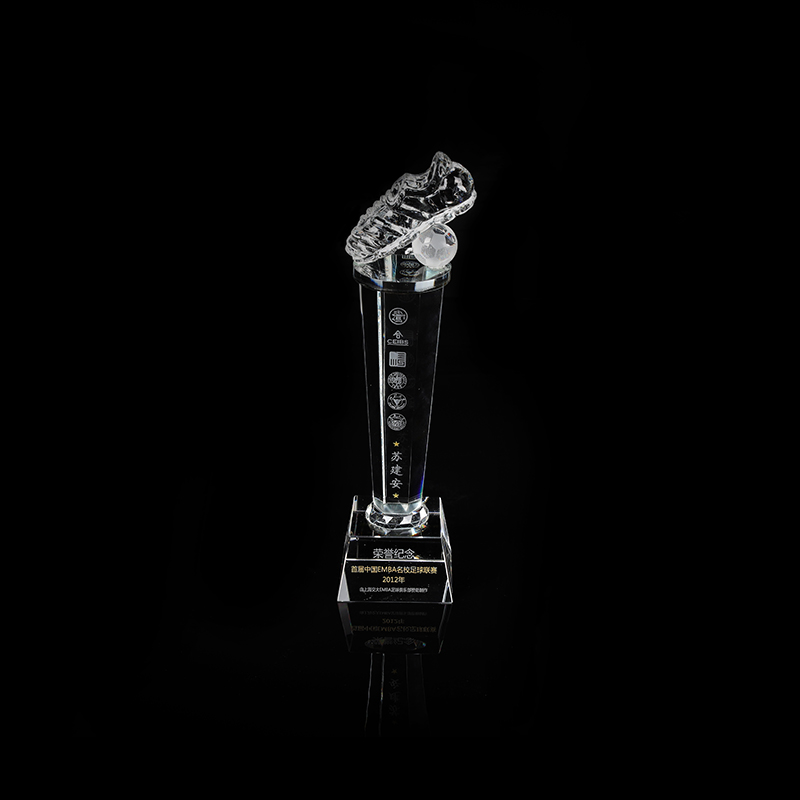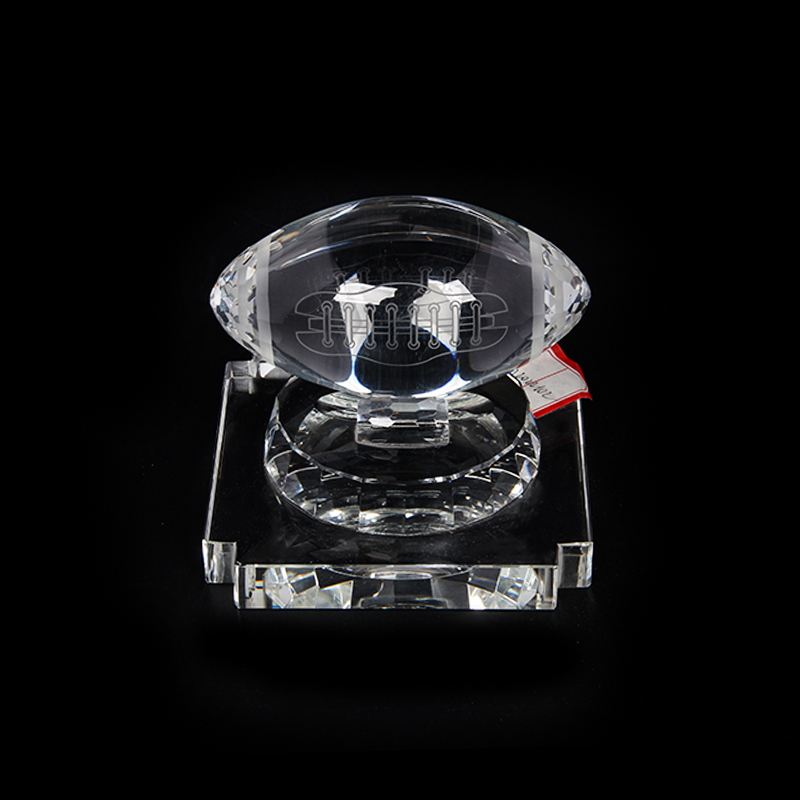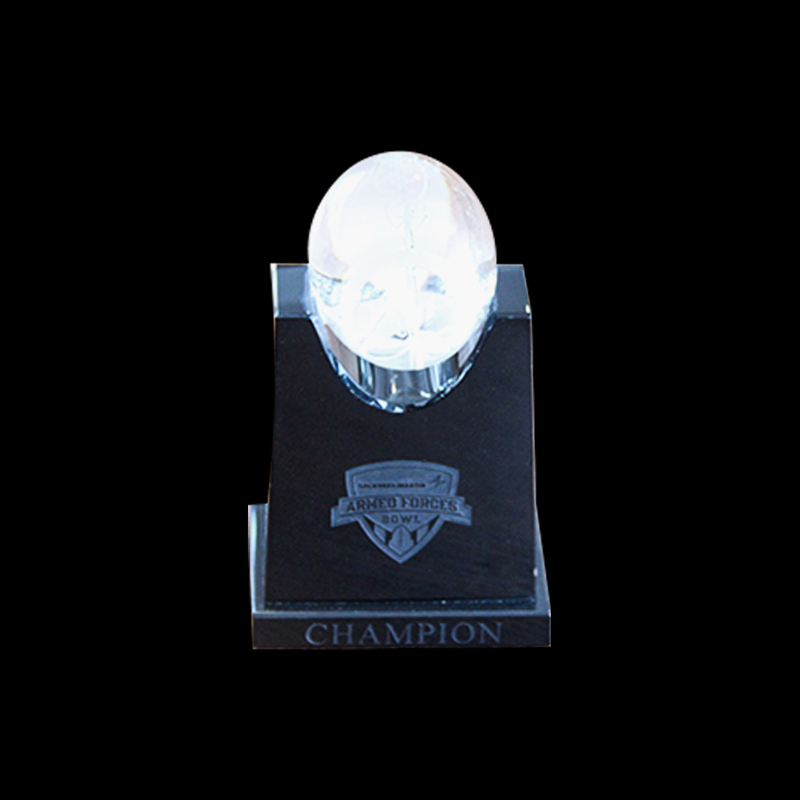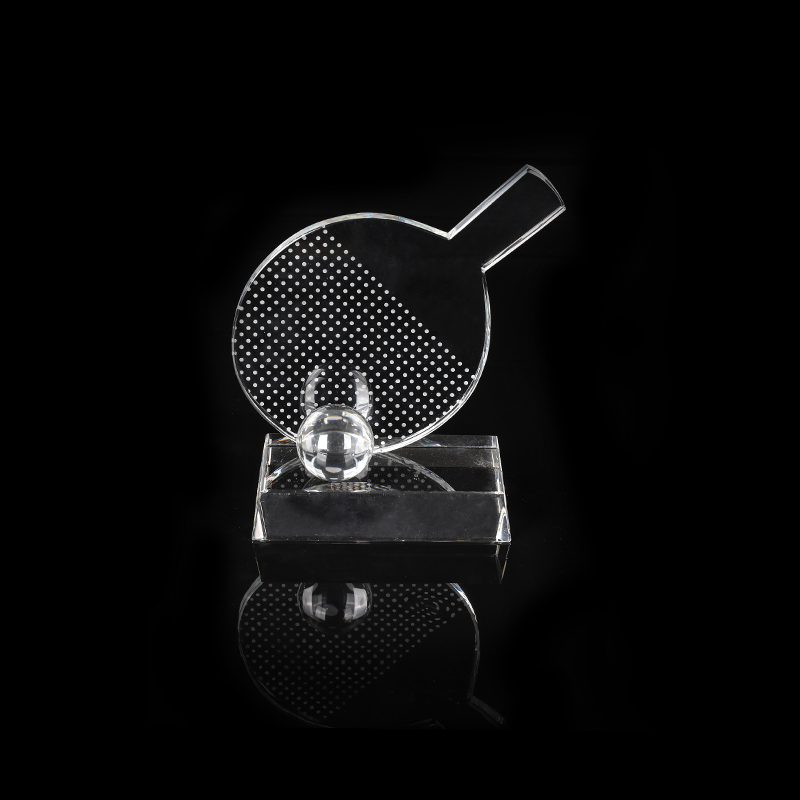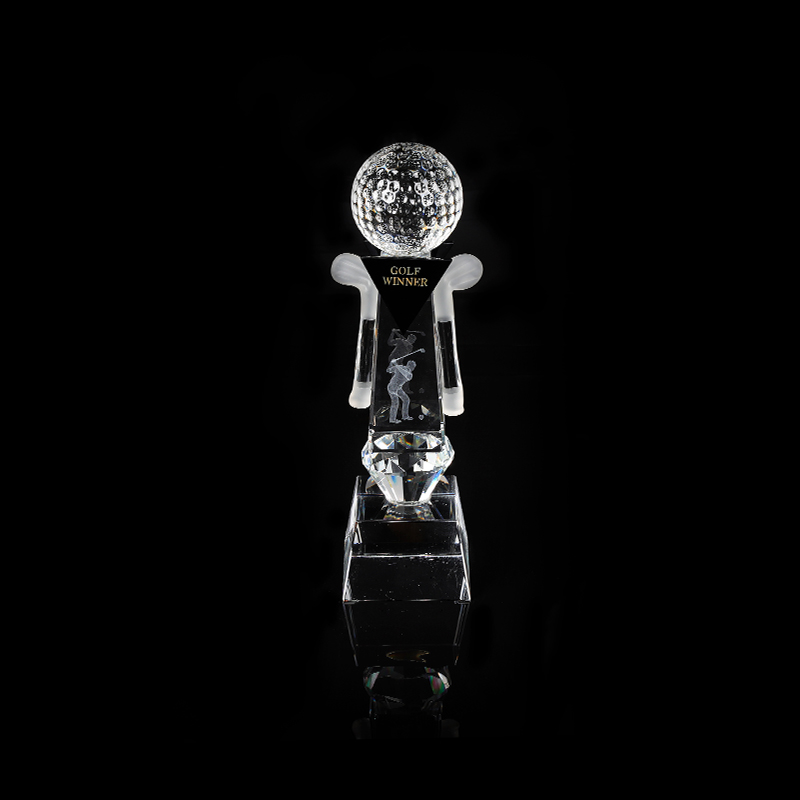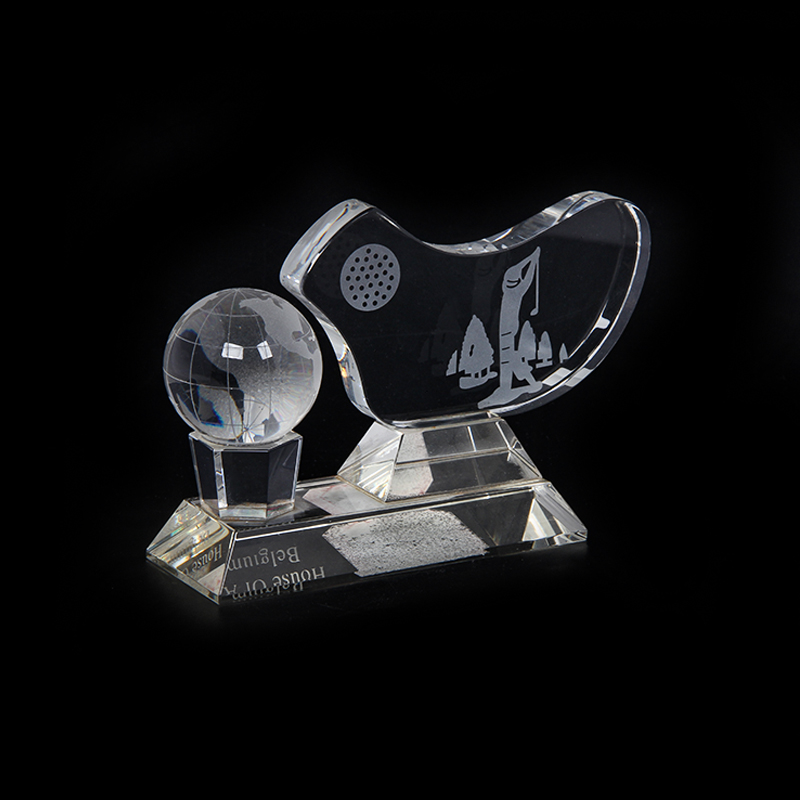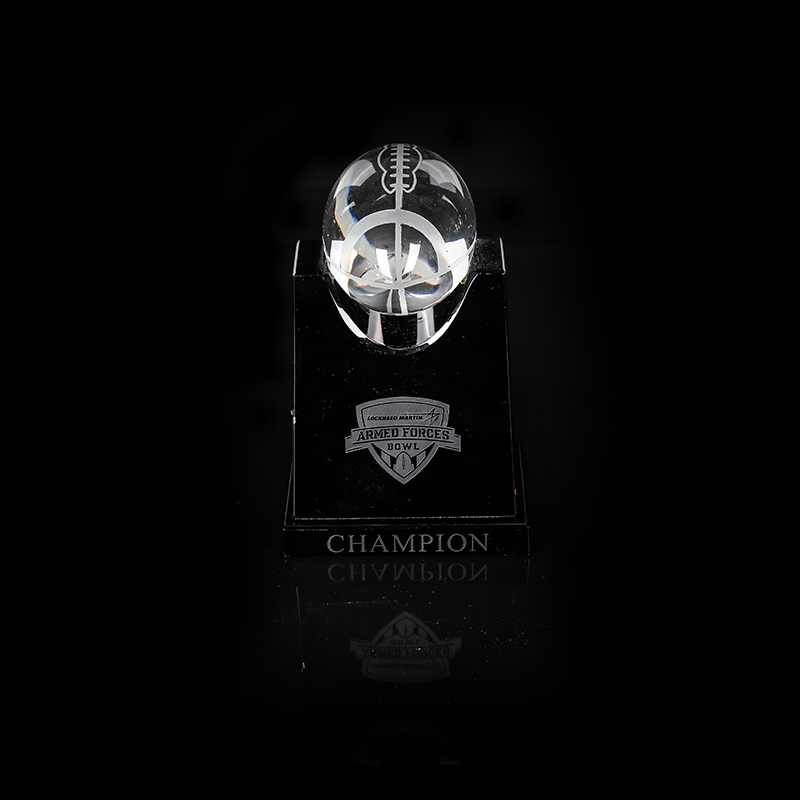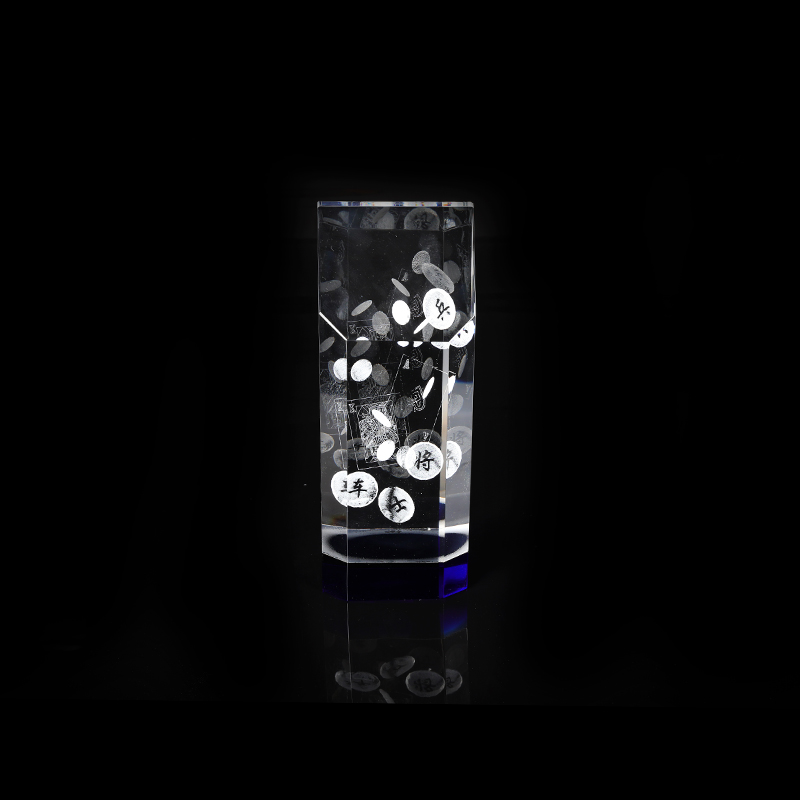The growing emphasis on sustainable production practices is affecting almost every area of manufacturing, including the development of decorative and commemorative crystal products. In the production of crystal cube laser engraving and crystal glass medals, the use of environmentally friendly processes has become an important factor for both companies and consumers. Crystal products are highly regarded for their clarity and durability, but their production process can also be managed in a way that reduces waste, reduces energy consumption, and improves overall material utilization.
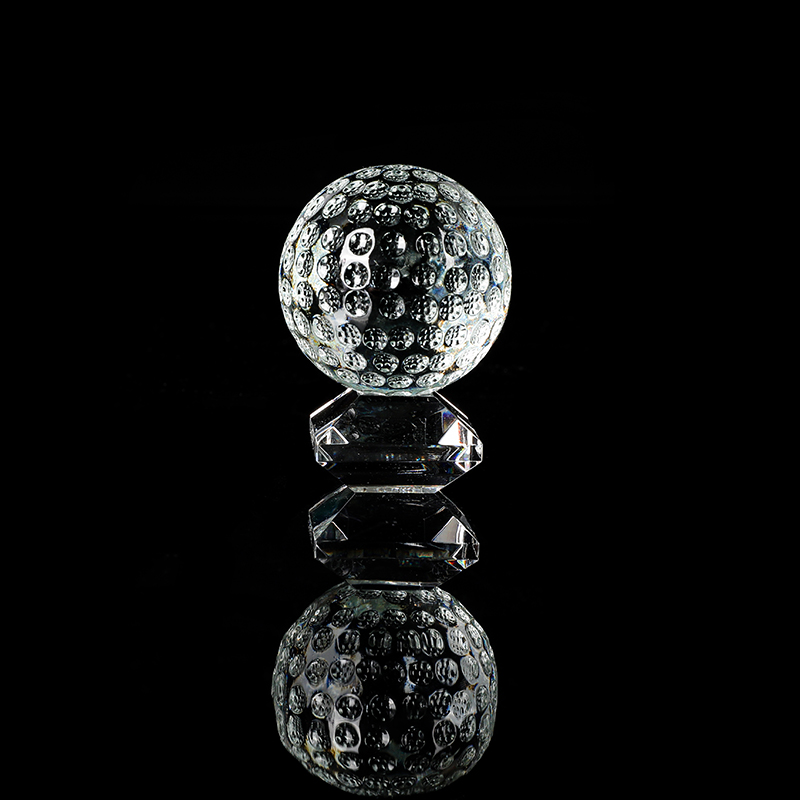
Advantages of precision laser cutting
Traditional engraving methods usually use grinding techniques, which produce a lot of dust and require chemical polishing. Modern laser cutting relies on a concentrated beam to etch inside or on the surface of the crystal block without direct contact. This method not only achieves precise and repeatable engraving results, but also reduces unnecessary waste by engraving only the areas required for the design.
Crystal cube laser technology can engrave detailed logos, text, and images inside the crystal without the use of inks or solvents. This helps create a cleaner production environment and reduces the possibility of chemical loss during the finishing process. Because the laser system is controlled by a computer, it can be adjusted digitally to avoid material loss that may occur during mechanical rework.
Another advantage of laser cutting is its ability to maintain consistent quality in both large and small batches. For companies that offer custom or bulk orders for crystal glass medals, this can help maintain visual consistency while controlling resource use.
Material Considerations and Resource Management
Choosing the right raw materials is another component of an environmentally friendly production strategy. High-quality optical crystals are often chosen for their uniformity and clarity, which reduces the likelihood of defects that can result in scrap and inventory waste. Consistent material quality can improve processing efficiency and reduce the energy required for cutting and polishing.
Offcuts and smaller crystal remnants can sometimes be reused into smaller ornaments or samples rather than being discarded. Many manufacturers have introduced sorting processes to collect and reuse these materials when practical, thereby promoting the recycling of resources.
Water usage during cutting and polishing is another aspect of sustainability. Factories that invest in closed-loop water filtration can reuse water multiple times, reducing the amount of fresh water required for production. This also limits wastewater discharge and the need for chemical treatment.
Energy efficiency in production facilities
Laser cutting equipment does require electrical energy, but modern machines are generally designed to run efficiently. Systems using diode-pumped solid-state lasers generally use less power than older lamp-pumped lasers. Energy-efficient equipment can be integrated into a wider energy management system within a factory to monitor and optimize energy consumption patterns.
Production schedules can also be planned to consolidate similar engraving tasks, thereby reducing the frequency of machine warm-up. By grouping work orders and using standardized templates where appropriate, manufacturers can increase production and reduce idle time, thereby indirectly reducing energy consumption.
For customers who purchase crystal glass medals or cubes in large quantities, understanding how production schedules affect energy consumption is a factor in achieving environmental goals. Clearly communicating schedules and batch sizes can help suppliers schedule production more efficiently.
Customization without excessive waste
Personalization remains one of the main reasons customers choose crystal awards and decorations. Laser cutting can create unique designs without the need for additional tooling, reducing the need for multiple molds or fixtures that may no longer be used. Digital templates can be adjusted quickly, allowing minor design changes to be made without restarting the process or discarding unfinished products.
For example, names, dates, and branding elements can be added to a crystal cube laser design or crystal glass medal before finalization, thus avoiding excess inventory. This flexibility supports a demand-driven production model, helping to align output with actual orders rather than blindly stocking up.
Packaging and Delivery Considerations
Sustainability extends beyond production to how products are packaged and delivered. Crystal products are often shipped in protective boxes or bubble liners to prevent breakage. Many manufacturers have moved to recyclable packaging materials and reduced plastic use where feasible. Customers can inquire about available packaging options that meet protective requirements and reduce environmental impact.
For export orders, consolidating shipments and using standardized carton sizes can improve container utilization, which can help reduce shipping-related emissions. Working with a logistics partner that prioritizes responsible practices can further support an environmentally friendly supply chain.
Supporting Customers’ Sustainability Goals
As more organizations incorporate environmental criteria into their procurement policies, suppliers need to demonstrate how their products align with these values. Whether purchasing a single souvenir or arranging a large corporate incentive program, buyers can request information about material sourcing, production processes, and energy management practices.
By choosing a manufacturer experienced in crystal cube laser technology and committed to reducing their environmental footprint, customers can incorporate sustainable products into their branding and awareness.
In the evolving world of crystal production, eco-friendly laser cutting offers a way to balance quality, customization, and environmental considerations without sacrificing design possibilities. This combination helps producers and customers meet growing expectations for responsible manufacturing while creating products that are both visually unique and meaningful.

 English
English 中文简体
中文简体 عربى
عربى
